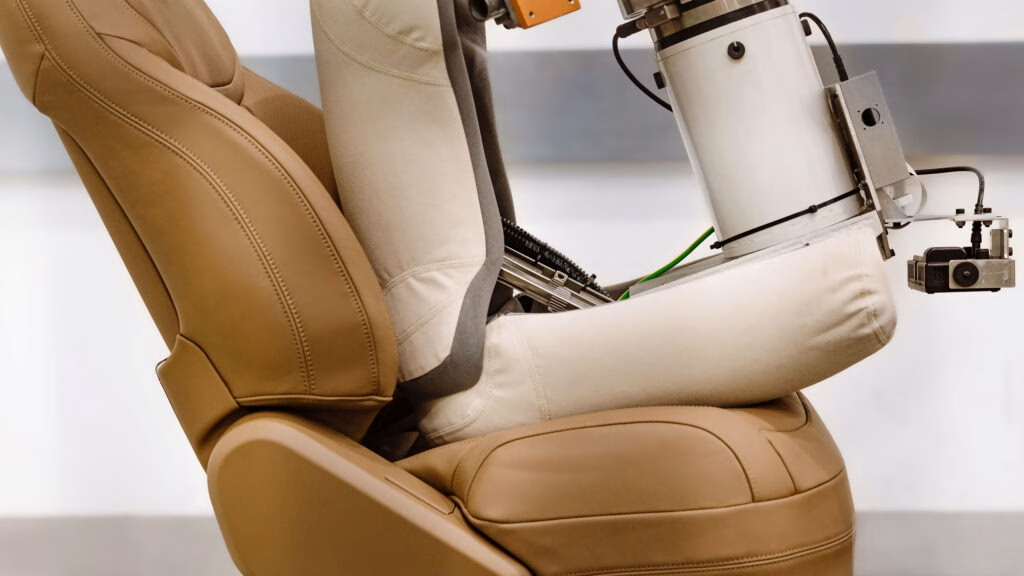Have you ever thought about how car manufacturers ensure that their seats can withstand years of wear and tear? It’s a fascinating process, and Jaguar Land Rover (JLR) has taken it to the next level with some cutting-edge technology. Enter the KUKA Occubots—robots designed to simulate the experience of sitting in a car for an extended period. Let’s dive into how these innovative machines work and what they mean for your driving comfort.
How Do the KUKA Occubots Work?
These robots are no ordinary machines. They can exert forces exceeding 800 newtons, which is roughly equivalent to the weight of an average adult. Over just five days, the Occubots can simulate about a decade’s worth of sitting, twisting, and sliding in a car seat. This rigorous testing helps ensure that the seats can handle the daily grind of everyday use.
Imagine sitting in your car for hours on end—these robots replicate that experience thousands of times, all while meticulously checking for wear and tear. They even have an onboard camera system that allows them to review their progress independently. This means they can identify any issues without needing a human supervisor, making the testing process incredibly efficient.
What About Heated Seats?
JLR doesn’t stop at just testing the basic comfort of their seats. They also put their heated seat systems through the wringer. For 25 days, the Occubots slide and twist in the seats, ensuring that the heating elements remain functional, no matter how much they’re used. This level of testing is crucial, especially for luxury vehicles where comfort is paramount.
The robots also assess how different foam materials respond to various body types. This is important because everyone is built differently, and a seat that’s comfortable for one person might not be for another. By using these robots, JLR can fine-tune their designs to cater to a broader range of customers.
Why Robots Over Humans?
You might wonder why JLR opted for robots instead of human testers. The answer is simple: efficiency. Unlike humans, these robots can operate around the clock without needing breaks. They can continuously test and gather data, which speeds up the development process significantly. Plus, they eliminate the variability that comes with human testers, providing a consistent testing environment.
What Does This Mean for You?
When you step into a Jaguar or Land Rover, you’re not just getting a vehicle; you’re experiencing the result of meticulous engineering and testing. As Thomas Mueller, JLR’s executive director of product engineering, puts it, settling into your seat is one of the first experiences you have when entering a vehicle. Comfort is critical, and these robots help ensure that every ride feels just right from day one.
The rigorous testing extends across the entire JLR lineup, including iconic models like the Range Rover, Defender, and Discovery. So, the next time you sink into the plush seats of a luxury SUV, remember that a tireless robot may have played a role in making that experience as comfortable as possible.
In the world of automotive design, innovation is key. The use of robots like the KUKA Occubots represents a significant leap forward in how manufacturers approach quality and comfort. It’s not just about making a car that looks good; it’s about creating a vehicle that feels good to drive, day after day.
The big takeaway? The journey to comfort in your car isn’t about perfection—it’s about smarter adjustments. Start paying attention to the little things in your vehicle, and you might just find ways to enhance your driving experience.

